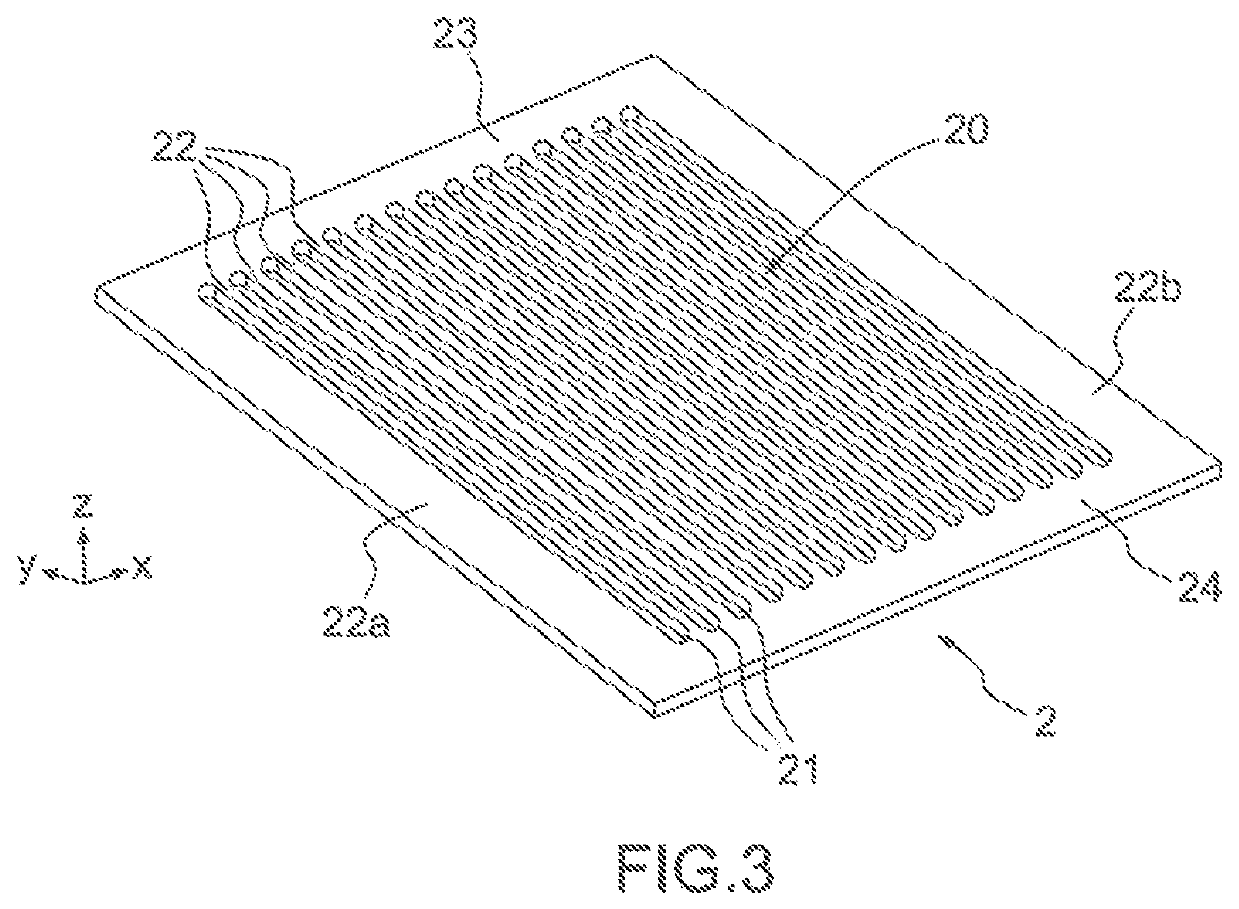Perforated piezoelectric hydrophone, array comprising a plurality of hydrophones and method for making said hydrophone
a piezoelectric hydrophone and piezoelectric hydrophone technology, applied in the field of sonar, can solve the problems of poor hydrostatic sensitivity, low mechanical coupling, and limited noise level at the beamforming output, and achieve the effect of simple and inexpensive, and ensure the pressure resistance of the devi
- Summary
- Abstract
- Description
- Claims
- Application Information
AI Technical Summary
Benefits of technology
Problems solved by technology
Method used
Image
Examples
Embodiment Construction
[0063]The invention relates to a hydrophone configured to operate in push-pull mode. This type of hydrophone is designed to be subjected to the same pressure on all faces thereof. It is therefore configured to have an operating frequency domain in which its size is much smaller than the wavelength of the acoustic waves detected.
[0064]This type of hydrophone is in contrast to hydrophones intended to operate by flexing, such as the hydrophones referred to as cantilever beam hydrophones that are intended to detect differences in pressure between their opposite faces.
[0065]The hydrophone according to the invention may be intended to be submerged at great depth. In this case, it must resist high hydrostatic pressures, for example at least 30 bar.
[0066]FIG. 1 shows a schematic representation in perspective of an example of a hydrophone according to the invention. This hydrophone comprises a stack 10 of layers 1 to5, for example assembled by bonding. Other means of assembly are possible, s...
PUM
 Login to View More
Login to View More Abstract
Description
Claims
Application Information
 Login to View More
Login to View More - R&D
- Intellectual Property
- Life Sciences
- Materials
- Tech Scout
- Unparalleled Data Quality
- Higher Quality Content
- 60% Fewer Hallucinations
Browse by: Latest US Patents, China's latest patents, Technical Efficacy Thesaurus, Application Domain, Technology Topic, Popular Technical Reports.
© 2025 PatSnap. All rights reserved.Legal|Privacy policy|Modern Slavery Act Transparency Statement|Sitemap|About US| Contact US: help@patsnap.com



